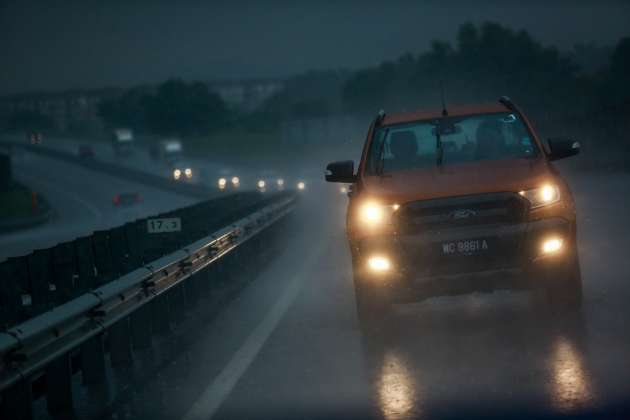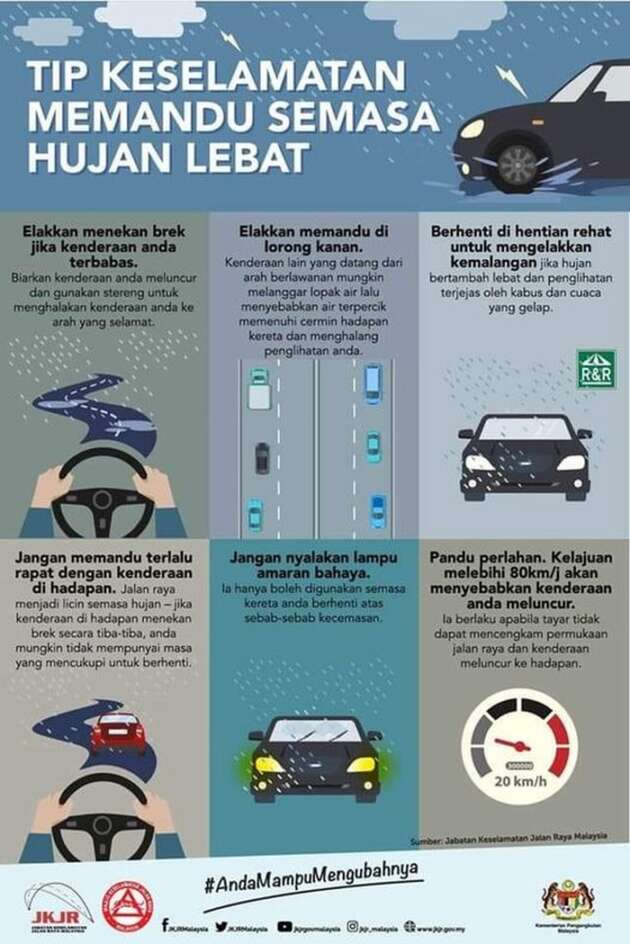The transport ministry, together with the road safety department (JKJR) has issued yet another reminder to motorists to exercise due care when driving in heavy rain, which sounds pretty much like the daily weather in […] The post Don’t...
The transport ministry, together with the road safety department (JKJR) has issued yet another reminder to motorists to exercise due care when driving in heavy rain, which sounds pretty much like the daily weather in the evening these days, and the message is accompanied by safety tips.
Presented via an infographic, these include not tailing the car in front of you too closely and reducing your speed in rainy conditions, with the latter suggestion being to keep your speed below 80 km/h. The first of course gives you more room to react and avoid a collision should the car in front of you brake suddenly, while the second is sound advice – grip from the tyres diminishes significantly in the wet, and controlling the effects of aquaplaning becomes harder the faster you go.
Other pointers include not driving on the right-most, overtaking lane during or after very heavy rain, because this avoids the effects of potential water splash enveloping your car, sent along from a vehicle in the opposite direction driving through standing water on their lane, although this is probably easier said than done (as in avoiding the use of the overtaking lane altogether).
Also easier noted than accomplished is avoiding stomping on the brakes should you feel the vehicle losing contact with the road, with the advice being to instead allowing the slide and using the steering to gauge traction until the tyres regain grip. Of course, fighting the natural instinct of standing on the brakes in such a scenario is a hard thing to avoid.
Further sound advice includes pulling over and taking a break – at the nearest R&R, if you’re travelling on the highway – should the rain get heavier, and wait for conditions to improve. As for the last tip, it’s something that has been repeated countless times, over the years – do not use the hazard lights in the rain, because as its name indicates, it’s for use in emergencies only.
They are not “double signals”, as they are so often wrongly called in the vernacular. Having them on simply causes confusion for motorists travelling behind the still-moving vehicle, adding unnecessary stress on top of the already reduced visibility for the drivers following. While the advice to avoid using hazard lights might fall on deaf ears for the most, it’s something that needs to be repeated, and you can bet it will be done again in the future.
The post Don’t use hazard lights when driving in the rain – JKJR appeared first on Paul Tan's Automotive News.














